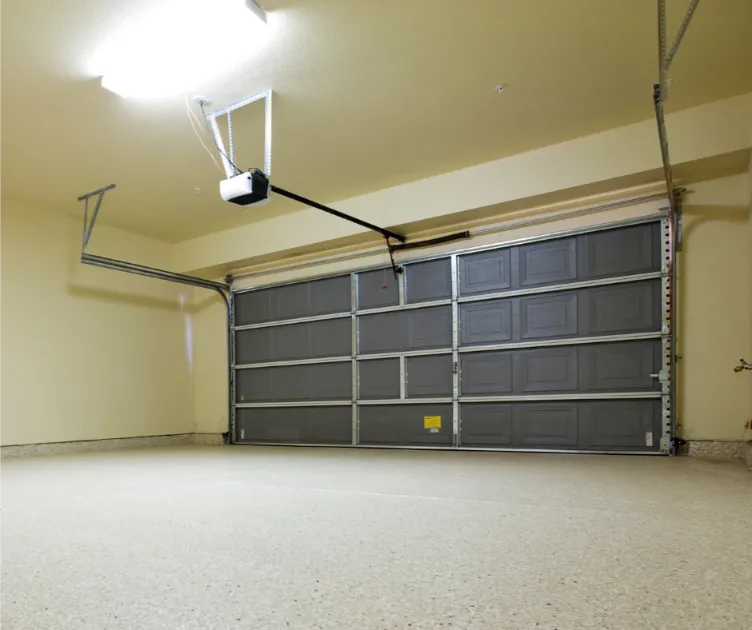Your garage door is more than just a door—it’s the largest moving part of your home and a key part of your daily life. Whether you’re parking your car or entering your home, you use your garage door multiple times a day. But have you ever thought about what happens if it stops working?
Many of us forget how important it is to perform regular maintenance on our garage doors. Skipping this can lead to unexpected repair costs, safety hazards, and a shorter lifespan for your door. In this blog, we’ll dive into some easy maintenance tasks and tips to keep your Garage Door operating smoothly. Whether you’re handy or just starting out, these insights will help you properly maintain your entry system and keep it working well for years to come.
Why Regular Garage Door Maintenance Matters
Regular garage door maintenance is essential to keep your garage door in good shape. Without it, parts like springs, cables, and rollers can wear out or break. An unbalanced Garage Door puts extra stress on the opener, which can cause it to fail. Imagine trying to leave for work, and the door doesn’t open—that’s a hassle nobody wants.
Safety is another key reason to maintain your overhead system. Safety features, like the auto-reverse function, help prevent accidents. If the entryway doesn’t reverse when it should, it could harm someone or damage something in its path. By performing routine maintenance, you not only keep your Garage Door operating smoothly but also ensure the safety features work properly, protecting your family.
Checking Door Balance and Tracks
An unbalanced Garage Door can cause significant issues over time. To check the balance, disconnect the opener by pulling the release handle—this allows you to move the door manually. Lift it about halfway and let go. If the door stays in place, it’s balanced; if it moves up or down, it may need an adjustment.
Next, inspect the tracks on both sides. Ensure they’re clean and aligned correctly. Misaligned tracks can hinder smooth movement and might even cause the entryway to come off the track. Use a level to verify alignment and tighten any loose brackets with a socket wrench. Regularly checking these components helps prevent issues and keeps your Garage Door functioning efficiently.

Testing Safety Features
Ensuring the safety features on your Garage Door are functioning correctly is essential. Here are the top three ways to check them:
Auto-Reverse Mechanism: Place a solid object, like a piece of wood, in the door’s path. Close the door using the opener. If it doesn’t reverse upon contact, this feature may be faulty and in need of repair.
Photo-Electric Sensors: These sensors are located on each side, near the bottom. Close the entryway and wave something in front of the sensors. The door should reverse immediately. If not, clean the sensors and check their alignment.
Manual Release Function: Disconnect the opener by pulling the release cord to see if you can move the door manually, which is critical during power outages. If the entryway is hard to lift or doesn’t stay open, it may indicate balance or spring issues.
Regularly testing these safety features helps prevent the door from becoming hazardous and ensures your Garage Door operates securely.
How To Check Garage Door Tracks
Ensuring the safety features on your Garage Door are functioning is crucial. Here are the top three ways to check them:
Auto-Reverse Mechanism: Place a solid object, like a piece of wood, in the door’s path. Close the door using the opener. If it doesn’t reverse upon contact, this feature might be faulty and need repair.
Photo-Electric Sensors: Located on each side near the bottom, these sensors detect objects in the door’s path. Close the door and wave something in front of the sensors. The door should reverse immediately. If not, clean the sensors and verify their alignment.
Manual Release Function: Disconnect the opener by pulling the release cord to check if you can move the door manually. This function is essential during power outages. If the door is hard to lift or doesn’t stay open, there may be issues with balance or springs.
Regularly testing these safety features helps prevent the door from becoming hazardous and ensures your Garage Door operates safely.
Checking If Your Garage Door Opens and Closes
To make sure your garage door opens and closes properly, disconnect the opener by pulling the release handle and lift the door by hand. The door should move smoothly without sticking. If it’s hard to lift or doesn’t stay open, this could mean problems with the springs or that the door is unbalanced. Also, listen for any strange noises when moving the door. Grinding or scraping sounds might mean you need to check your garage door parts.
How To Clean The Garage Door Springs
Cleaning the Garage Door springs is an easy way to extend the life of your system. First, disconnect the door manually to ensure safety. Wipe down the springs with a cloth to remove dirt and grime—be cautious, as they are under high tension. After cleaning, apply a door lubricant to the springs, rollers, and hinges. This maintenance step keeps the system operating smoothly and reduces wear on the parts.
When to Seek Professional Garage Door Service
While regular maintenance can fix many issues, some problems need a professional. If you notice frayed cables, or broken springs, or if the garage door makes loud or strange noises, it’s time to call a service technician. Trying to fix these parts yourself can be dangerous because of the high tension in the springs and cables.
Also, if you’ve done routine maintenance but the door still doesn’t work right, a specialist can find and fix the problem. Regular preventative maintenance by a professional not only fixes current issues but can also help you extend the life of your garage door, saving you time and money.
